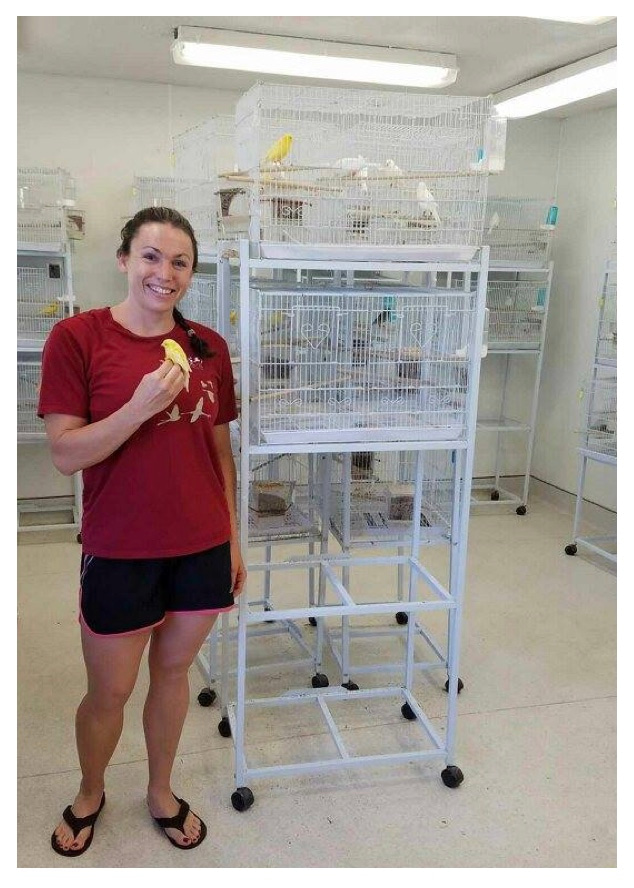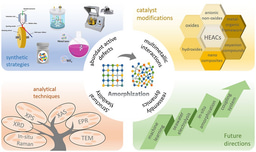Lessons of color from a colorless bird
Published in Ecology & Evolution

This paper is published in Nature Communications with coauthors Andreas Kavazis, Dennis Hasselquist, Wendy Hood, Yufeng Zhang, Matt Toomey, and Geoffrey Hill.
For many behavioral ecologists, research happens deep in the wilderness. In my experience in studies of wild songbirds, each data point has to be earned: we battle clouds of mosquitoes and dense shrubbery, hike up mountainsides with nets, poles, and speakers, and squint up to identify tiny backlit birds in clouds of bird-shaped leaves. While chasing an elusive focal individual across a rocky, vine-tangled hillside, the thought of studying cages full of birds in an aviary on a university campus seems like a luxurious fantasy.
After completing my dissertation on the quintessential caged bird, the domestic canary, I can tell you that the idea of easy captive research is just that: a fantasy. But just as the pursuit of excellent science keeps us trudging through a tough field season, the unbelievable opportunity to work on a system as unique and valuable as the canaries was motivation enough to press onward through administrative red tape and cages coated with fecal matter.
My collaborators and I recently published the culmination of my research on canaries in Nature Communications (see link above), but the journey to this manuscript began in 2013 in a rural college town in Alabama, USA. I had recently embarked on a doctoral research program in the lab of Geoffrey Hill, renowned for his work in carotenoid-based bird coloration—the reds, oranges, and yellows found in the feathers and bare parts of a wide variety of species. Through a happy accident, Geoff had recently learned of a special bird: a canary that was colorless, both inside and out.

This bird, scarcely more than a myth at the time we learned about it, is a carotenoid biologist’s dream. The carotenoid pigments that color the feathers of many birds (including wild-type canaries) are hypothesized to be important to high functioning immune system and antioxidant defenses, but conclusive tests of this hypothesis have proven elusive. Fortuitously, aviculturists interested in breeding new and different forms of the common canary had developed a pure white bird; this strain of canary, we later discovered, has a knock-down mutation that almost completely eliminates its ability to absorb carotenoid pigments from the diet. By comparing the performance of this white, near-carotenoid-free canary with his stereotypical yellow counterpart, we could cleanly test whether internal carotenoids are beneficial by searching for a cost of their absence.
As a new Ph.D. student, the challenge was on! All I needed to do was acquire the birds and perform a few basic tests of physiological function.
STEP ONE: Find the canaries. Through extensive Google searches and networking through a surprisingly extensive community of U.S. aviculturists, I negotiated for two big, wooden boxes full of chirping white and yellow canaries to arrive at the Atlanta airport, ready for transport to the university.
STEP TWO: Prepare a place to keep the canaries. Fortunately, the Hill Lab runs Avian Research Laboratory One—or the “bird barn,” at Auburn University. All I had to do was jostle for space with the zebra finch projects.

STEP THREE: In a twist of fate, the aviary was shut down by the administration for renovation for a year. All birds currently held in the aviary were removed and my research was put on hold. I worked on a side project using canary feathers, but longed for the day I could study the birds themselves.
STEP FOUR: Reopen the aviary and receive the birds. All happily bathed off the filth of their cross-country flight and filled the renovated aviary with bright colors and musical songs.
STEPS FIVE THROUGH NINE: Learn what it means to be the primary caretaker of more than 150 little chirping balls of feathers that both consume and excrete seed at an astonishing rate. Among all the other songbirds I have kept since, canaries remain one of the most quirky. During the breeding season, healthy, unpaired females constantly raise false alarms by spending their days sitting on the bottom of the cage, legs dangling through the cage wire, laying eggs that drop through to the cage lining. No cage liner is safe from their eager shredding of any and all shreddable material within reach of their inquisitive bills as they attempt to build nests on everything from water spouts to other birds. And, canaries are more fascinated with water than any finch I’ve known. Put a cup of water in their cage and they will bathe until it’s all over the floor; put a bottle of water in their cage and they will try to bathe in the spigot, drop by drop.

Some of the peculiarities of canaries and their husbandry are less amusing. I regularly hand-dosed birds with routine gut parasite prevention medication—a sticky, banana-flavored oral solution that fidgety birds did their best to shower all over my clothes. I spent many a weekend straining shoulder-deep into cages to disinfect wiring and scrape concrete-like feces from cages. I also faced several daunting administrative delays, the most alarming of which was a health scare. This moment is perhaps best summarized by the morning I ran helter-skelter into the Hill Lab office, extolling “It was a false positive!” to all who would listen. After three days barred from the aviary out of concern for zoonoses, I had learned that the avian chlamydia test results—which would have spelled doom for my birds and my research alike—had not held up under further laboratory examination.
STEP 10: After many months of delay, start physiological tests. Canaries are just as fickle in their yield of blood samples and the timing of their seasonal behaviors as many a wild bird, but the rocky start to my data collection had a happy ending.
The results of our study—finding no benefit to possessing carotenoid-rich tissues—stand as an exciting challenge to conventional hypotheses regarding honest carotenoid signals.
And, most importantly, all canaries from the aviary have now found new homes in spare rooms and backyards around the southeastern U.S. As the story of the Alabamian canaries draws to a close, there is no better thanks I can give my research subjects than a long and comfortable retirement.




Please sign in or register for FREE
If you are a registered user on Research Communities by Springer Nature, please sign in